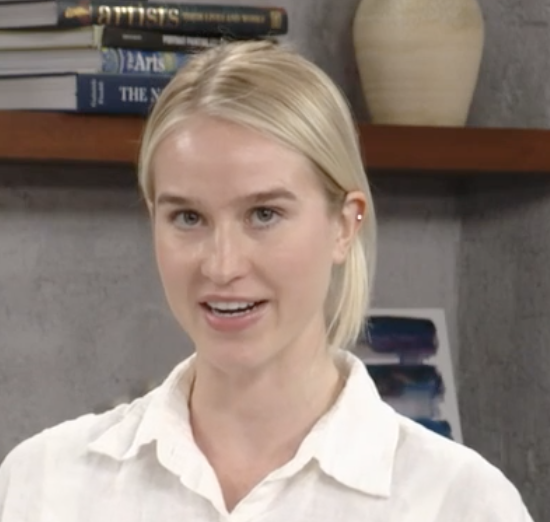
Rendering Forehead
Savannah Tate CuffThe forehead is a key feature that can significantly enhance likeness in a portrait drawing. Artist Savannah Tate Cuff demonstrates how she renders the forehead after completing the block-in stages. This process, known as rendering or modeling, involves adding shading to the linear block-in. Using a skull as a reference, Savannah highlights the frontal bone (the area we refer to as the forehead) and the glabella, the structure between the upper eye sockets. She also emphasizes the importance of observing the ridges at the top of the eye socket. Moving around the model, Savannah locates the terminator, the boundary between light and shadow on the forehead. She starts at the terminator at the eyebrow using an HB pencil, then moves to the light-facing plane with a 2H pencil, noting that the toned paper helps in the shading process.
Savannah identifies the point where the light source is strongest and gradually darkens the area turning away from the light. She compares the forehead to a cylinder in its basic form, achieving a realistic effect by creating a smooth gradation from light to dark or vice versa. She also refines the hairline and the eyebrow. Moles or freckles are subtle details you can choose to add, but she advises against overmodeling them. While rendering, Savannah keeps in mind the entire frontal bone, working out from each terminator toward the light. She then renders the surrounding areas of hair to indirectly describe the forehead, using a stump to soften and darken the hair's cast-shadow shapes, enriching them in value, and finalizing the details of the eyebrows.
Modeling the forehead is relatively simple for a young woman, but for men, the brow structure may be more prominent. Take time to carefully observe your subject and their interaction with the light source.
